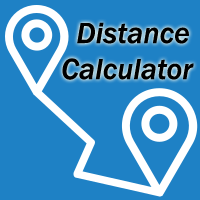Distance from Wilkes-Barre, PA, USA to Great Lakes, North Chicago, IL, USA
There is driving distance between and .
There is estimated duration to reach destination.
Distance Conversions
Here is the distance in miles, and kilometers between and
| Distance type |
Miles |
Kilometers |
Nautical Miles |
| Driving distance |
|
|
|
| Straight distance |
|
|
|
About Wilkes-Barre, PA, USA
Wilkes-Barre, Pennsylvania
Wilkes-Barre ( or ) is a city in the Commonwealth of Pennsylvania and the county seat of Luzerne County.
Wilkes-Barre/Scranton International Airport
Wilkes-Barre/Scranton International Airport (IATA: AVP, ICAO: KAVP, FAA LID: AVP) is mostly in Pittston Township, Pennsylvania, and spans the border between Luzerne County and Lackawanna County.
Wilkes-Barre Area School District
Wilkes–Barre Area School District is a suburban public school district located in Luzerne County, Pennsylvania
Wilkes-Barre/Scranton Penguins
The Wilkes-Barre/Scranton Penguins are the American Hockey League affiliate of the National Hockey League's Pittsburgh Penguins.
Wilkes-Barre/Scranton Pioneers
The Wilkes-Barre/Scranton Pioneers were a minor league arena football team that played in the AF2. The team was part of the East Division in the American conference.
About Great Lakes, North Chicago, IL, USA
Great Lakes
The Great Lakes (French: les Grands-Lacs), also called the Laurentian Great Lakes and the Great Lakes of North America, are a series of interconnected freshwater lakes primarily in the upper mid-east region of North America, on the Canada–United States border, which connect to the Atlantic Ocean through the Saint Lawrence River.
Great Lakes Megalopolis
The Great Lakes Megalopolis consists of the group of metropolitan areas in North America largely in the Great Lakes region and along the Saint Lawrence Seaway.
Great Lakes Storm of 1913
The Great Lakes Storm of 1913, historically referred to as the "Big Blow," the "Freshwater Fury," or the "White Hurricane," was a blizzard with hurricane-force winds that devastated the Great Lakes Basin in the Midwestern United States and Ontario, Canada from November 7 through November 10, 1913. The storm was most powerful on November 9, battering and overturning ships on four of the five Great Lakes, particularly Lake Huron.
Great Lakes region
The Great Lakes region of North America is a bi-national Canadian–American region that includes portions of the eight U.S.
Great Lakes tectonic zone
The Great Lakes tectonic zone (GLTZ) is bounded by South Dakota at its tip and heads northeast to south of Duluth, Minnesota, then heads east through northern Wisconsin, Marquette, Michigan, and then trends more northeasterly to skim the northern-most shores of lakes.


